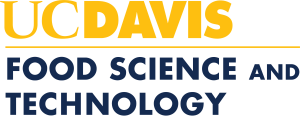A. Specific Learning Outcomes. At the end of this course students will be able to:
- Describe and differentiate how the reactive groups of food components play an important role in chemical reactions
- Describe and use contemporary analytical methods for quantitatively evaluating the composition of major food components
- Describe and distinguish the chemical and physical properties of major food components and relate this information to the isolation and chemical analysis of food components
- Select and apply appropriate basic statistical methods to sampling/testing and the assessment of experimental data
- Explain how to generate, evaluate and appropriately use standard curves through regression analysis
- Explain the chemical principles that govern solvent partitioning and be able to discuss how solvent partitioning is used to isolate analytes
- Explain the major chemical reactions that occur during food processing and storage and relate these reactions to food quality and shelf-life
- Explain the techniques of UV-Vis spectroscopy, high performance liquid chromatography (HPLC), gas chromatography (GC), atomic adsorption spectroscopy (AAS), atomic emission spectroscopy (AES) and mass spectrometry (MS) and their describe their use in food analysis
- Discuss food additives, adulterants and toxins and describe the analytical methods used for quantitatively evaluating these compounds in foods
- Write reports summarizing and evaluating experimental data related to the chemical analysis of foods
How this course addresses IFT Core Competencies:
Senior-level course:
FST103 is offered in the winter quarter of the senior year. FST 103 is a 4 unit lecture and laboratory course in advanced level food chemistry. FST 103 builds on principles taught in FST100A and FST101A and complements FST100B and FST102B to meet the competencies in the Chemistry section, while also addressing many of the Applied Food Science Skills. Through the hands-on section of the course, FST 103 also covers some of the Success skills required by IFT.
B. Tools used to assess program outcomes.
Bloom’s levels I-VI.
As a course that teaches advanced material and requires students to integrate their knowledge, assessment varies from quizzes, pre-laboratory homework assignments, and exams to test knowledge as well as laboratory reports that require more advanced skills (using analytical equipment, applying correct procedures and statistical tests and interpreting experimental data) data complete. Some exam questions begin to cover both knowledge and application. For example, students are asked to identify the appropriate analytical methods for the analysis of a specific type of food component as well as identify appropriate extraction solvents for the isolation of the compounds of interest and appropriate detectors/column for the analytical method selected.
C. Brief summary of assessment results to date.
The Physical and Chemical Analysis of Foods (FST103) has been taught by Alyson Mitchell for 14 years and has been progressively developed to acquaint students with the theory and application of physical and chemical methods for determining the chemical composition of foods. Modern separation and instrumental analysis techniques are stressed.
- Each year students are asked to complete a course evaluation form for the course. The numerical scores using a scale of 1 (strongly disagree) to 5 (strongly agree) for specific questions as well as verbal comments are compiled. The course and the instructor are evaluated separately. The mean score for the course and instructor evaluation are consistently 4.2. Students are asked to submit their own feedback on the course with suggestions for course and instructor improvement. These students’ assessments are studied carefully and new strategies are developed to deliver the course content in a more effective manner and to continue to improve learning outcomes. Based on this feedback, lecture outlines are now made available on-line on the course website. In addition, we now give pre-laboratory homework sets that cover the concepts to be learned in each weekly lab and provide practice questions for the exams.
- We plan to develop 1-2 new laboratories (summer 2014) based upon instructor observations and student course evaluations. The goal is to ensure optimal coordination with courses both before and after in the curriculum and to incorporate more statistical evaluation of experimental data.
